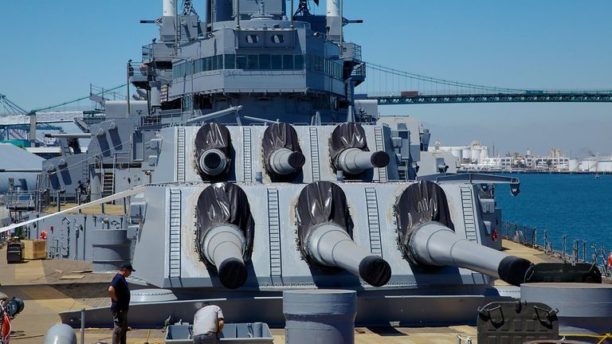
There’s no drone that works for every job. In this case, the team used 5 different pieces of DJI equipment, outfitted with different sensors. The variety of tools means a broad range of skills and expertise.
In order to get the aerial shots, the inspection, and the “B” roll video – the team used:
· Two DJI Matrice 600 Pros, one equipped with RTK and Lidar (Phoenix MiniRanger Lidar and Sony A7 R ii RGB camera)
· A DJI Matrice 210, with XT2 FLIR, Z30 zoom camera as well as an X4S RGB
· One DJI Inspire-2 with a X5s camera
· One Mavic Pro 2 with a Hasselblad camera
“Each year hundreds of Americans and tourists alike flock to the USS Iowa Museum in San Pedro, CA to admire the 900 ft long USS Iowa Battleship. The retired ship, which played an important role in U.S history, holds 16-inch gun turrets and was once able to launch 2,700-pound shells up to 24 miles away,” says Yuval Caspi, marketing and community manager for the drone insurance provider, Skywatch.ai.
“Even with all of the stress surrounding their excursion, the virtualization project proved to be a major success…” says Caspi. “The museum now has the tools that they could have never achieved without the use of laser-equipped drones. Now future generations will see and experience the museum, and explore the incredible USS Iowa ship, in a way that so many before did not get the chance to.”
Check out the video below, or find more information and images on the Adventures in Rediscovery blog.
Miriam McNabb is the Editor-in-Chief of DRONELIFE and CEO of JobForDrones, a professional drone services marketplace, and a fascinated observer of the emerging drone industry and the regulatory environment for drones. Miriam has penned over 3,000 articles focused on the commercial drone space and is an international speaker and recognized figure in the industry. Miriam has a degree from the University of Chicago and over 20 years of experience in high tech sales and marketing for new technologies.
For drone industry consulting or writing, Email Miriam.
TWITTER:@spaldingbarker
Subscribe to DroneLife here.
